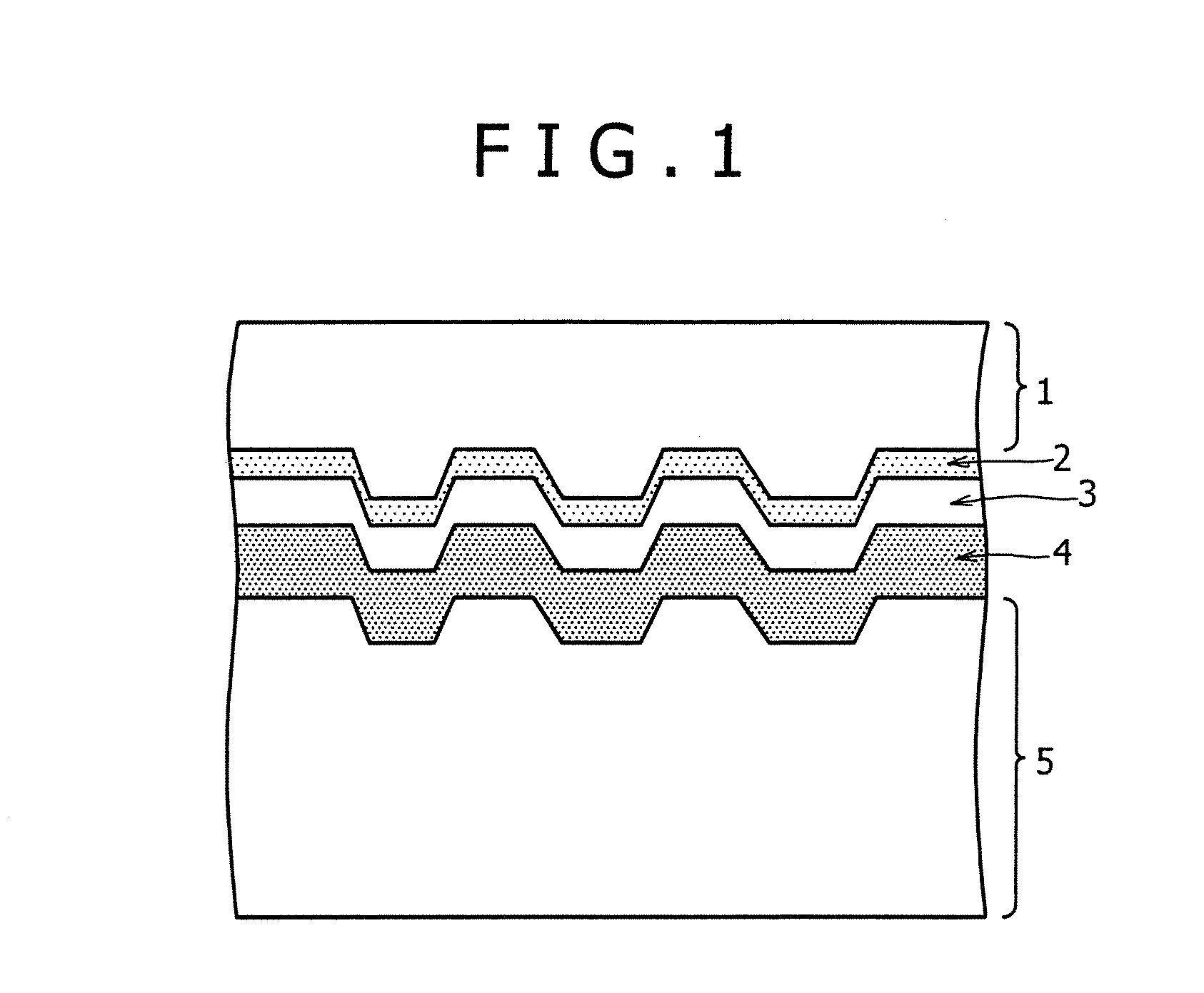Silver alloy reflective films for optical information recording media, silver alloy sputtering targets therefor, and optical information recording media
a technology of optical information and reflective films, applied in the field of silver alloy reflective films for optical information recording media, silver alloy reflective films for ag alloy sputtering targets, can solve the problems of high thermal conductivity, damage to base materials including polycarbonate substrates and adhesive layers, and inability to significantly give individual discs the identification of the disc, etc., and achieve the effect of easy laser beam marking
- Summary
- Abstract
- Description
- Claims
- Application Information
AI Technical Summary
Benefits of technology
Problems solved by technology
Method used
Image
Examples
experimental example 1
[0050] Ag alloy thin film shaving the compositions in Table 1, namely, Ag-3Nd—(Li, Au) alloy thin films [Ag alloy thin films containing 3% of Nd, and one of Li and Au] [Nos. 1 to 10], Ag—Nd-5Li alloy thin films [Nos. 11 to 14], Ag—(Y, Ce, Gd, Sm, La)—(Li, Mg, Al, Zn, Cu, Pt, Pd, Ru, Rh) alloy thin films [Nos. 15 to 27], and an Ag-5Nd alloy thin film [No. 28] were deposited. The thermal conductivities, laser-beam absorptivities, reflectivities, weather resistance, light resistance, and laser marking capabilities of the thin films were determined. The relationships between these properties and the contents of Li and Au were determined on the Ag-3Nd—(Li, Au) alloy thin films [Nos. 1 to 10]. Likewise, the relationships between these properties and the content of Nd were determined on the Ag—Nd-5Li alloy thin films [Nos. 11 to 14]. How the type of the alloying elements affects the properties was determined on the Ag—(Y, Ce, Gd, Sm, La)—(Li, Mg, Al, Zn, Cu, Pt, Pd, Ru, Rh) alloy thin film...
experimental example 2
[0062] Ag alloy thin films having the compositions in Table 2, i.e., Ag-3Nd-5Li—(Bi, Sb) alloy thin films [Nos. 1a to 8a] were deposited, and their thermal conductivities, laser-beam absorptivities, reflectivities, weather resistance, light resistance, and laser marking capabilities were determined, by the procedures of Experimental Example 1.
[0063] The results are shown in Table 2. The Ag alloy thin films have compositions satisfying the requirements according to the present invention while their Bi and Sb contents are varied. Consequently, some of them satisfy the preferred requirement in the present invention, i.e., the content of at least one of Bi and Sb of 0.01% to 3%, and the others do not.
[0064] Table 2 demonstrates that the weather resistance increases with an increasing Bi content, which prevents the reduction in reflectivity under conditions of high temperatures and high humidity.
experimental example 3
[0065] Ag alloy thin films having the compositions in Table 3, i.e., Ag-3Nd-5Li—(Sn, Pb) alloy thin films [Nos. 1b to 10b] were deposited, and their thermal conductivities, laser-beam absorptivities, reflectivities, weather resistance, light resistance, and laser marking capabilities were determined, by the procedures of Experimental Example 1.
[0066] The results are shown in Table 3. The Ag alloy thin films have compositions satisfying the requirements according to the present invention while their Sn and Pb contents are varied. Consequently, some of them satisfy the preferred requirement in the present invention, i.e., the content of at least one selected from the group consisting of In, Sn, and Pb of 2% to 10%, and the others do not.
[0067] Table 3 demonstrates that the thermal conductivity decreases and the laser-beam absorptivity increases with an increasing Sn or Pb content, indicating that these elements act to further improve the laser marking capability.
TABLE 1ElectricalT...
PUM
| Property | Measurement | Unit |
|---|---|---|
| reflectivity | aaaaa | aaaaa |
| reflectivity | aaaaa | aaaaa |
| reflectivity | aaaaa | aaaaa |
Abstract
Description
Claims
Application Information
 Login to View More
Login to View More - R&D
- Intellectual Property
- Life Sciences
- Materials
- Tech Scout
- Unparalleled Data Quality
- Higher Quality Content
- 60% Fewer Hallucinations
Browse by: Latest US Patents, China's latest patents, Technical Efficacy Thesaurus, Application Domain, Technology Topic, Popular Technical Reports.
© 2025 PatSnap. All rights reserved.Legal|Privacy policy|Modern Slavery Act Transparency Statement|Sitemap|About US| Contact US: help@patsnap.com

